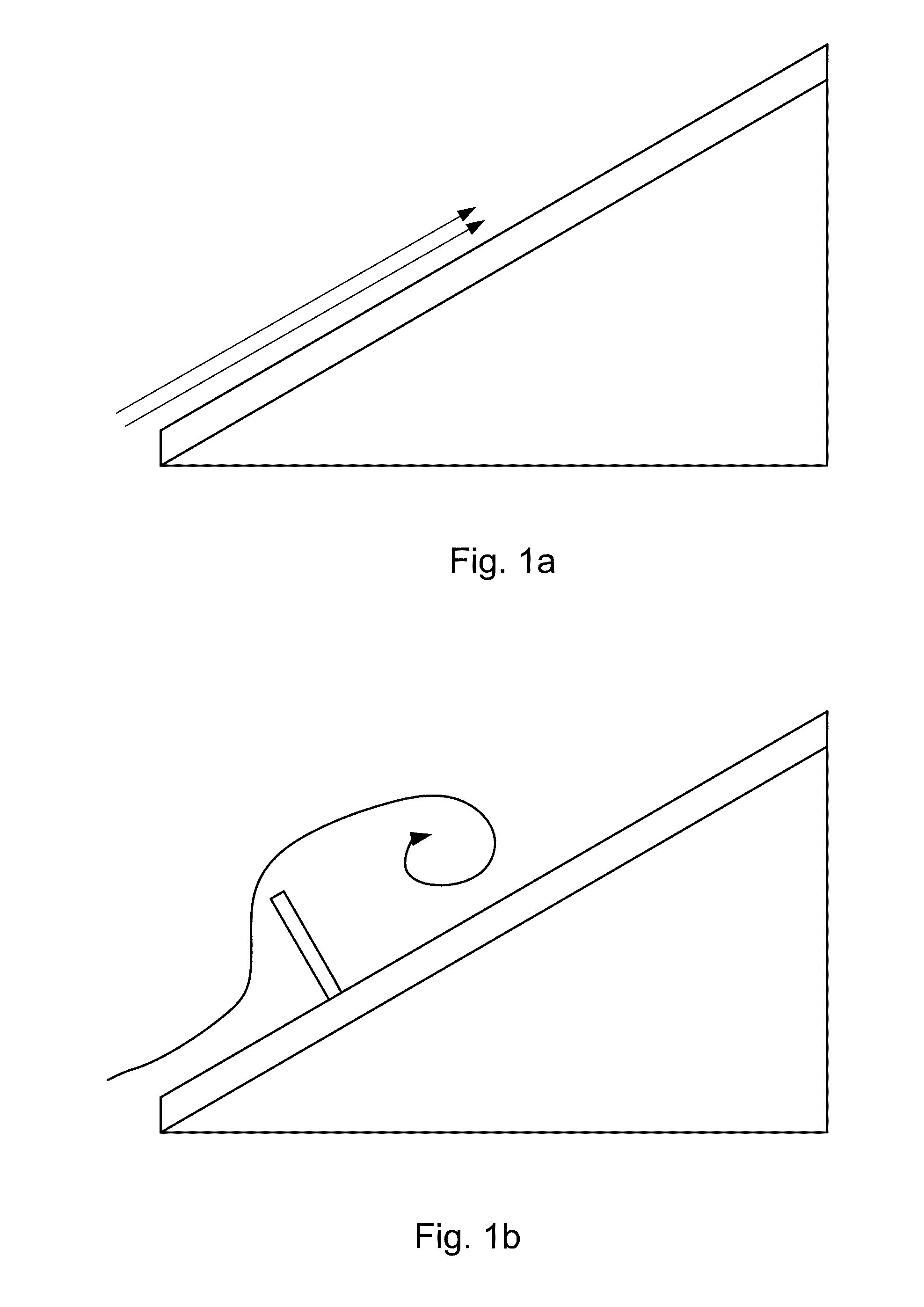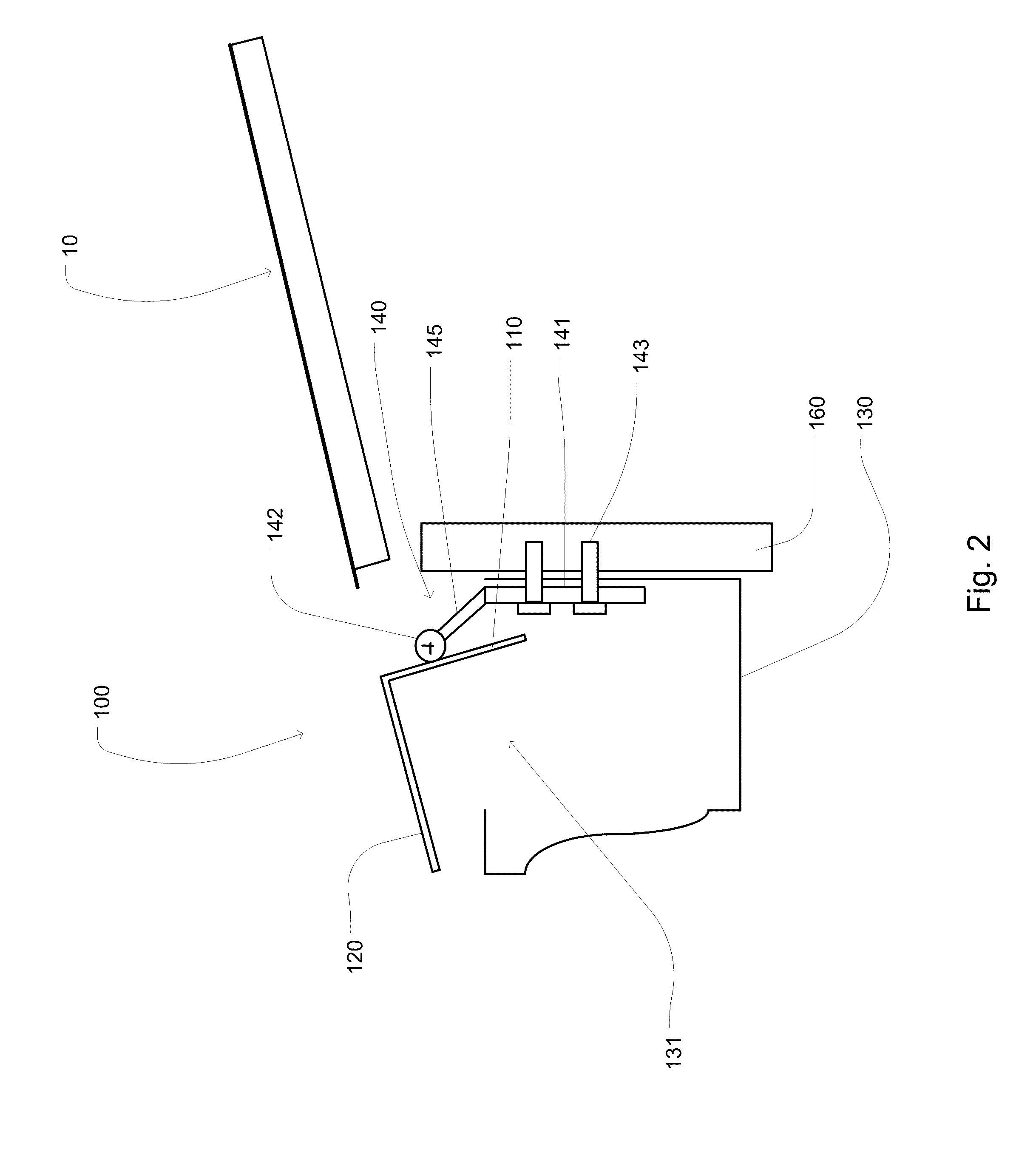Roof Spoiler
a technology of roof spoiler and roof plate, which is applied in the field of roof spoiler, can solve the problems of roof damage, roof shingles peeling up and lifting themselves off the roof, and affecting the stability of the deployed position of the roof plate, so as to facilitate the stability of the deployed position
- Summary
- Abstract
- Description
- Claims
- Application Information
AI Technical Summary
Benefits of technology
Problems solved by technology
Method used
Image
Examples
Embodiment Construction
[0032]A roof spoiler is intended to present an obstacle to attached flow during high (e.g., hurricane-force) winds. One way to present such an obstacle is to introduce a vertical, or substantially vertical member that interrupts that air flow. In other embodiments, the obstacle may not be vertical, but rather orthogonal to the roof surface, as shown in FIG. 1b. However, as mentioned above, a vertical member attached to the roof surface is unsightly and not likely to be adopted.
[0033]To improve the aesthetics of a roof spoiler, it is preferable that the spoiler has at least two operating positions; a deployed position, where it acts as an obstruction as described above, and a stowed position, where the spoiler should be relatively non-intrusive and barely visible to passersby.
[0034]One embodiment of such a roof spoiler is depicted in FIG. 2, which shows a cross-section of a first embodiment of the roof spoiler in the stowed position. The roof spoiler 100 is preferably L-shaped, with ...
PUM
 Login to View More
Login to View More Abstract
Description
Claims
Application Information
 Login to View More
Login to View More - R&D
- Intellectual Property
- Life Sciences
- Materials
- Tech Scout
- Unparalleled Data Quality
- Higher Quality Content
- 60% Fewer Hallucinations
Browse by: Latest US Patents, China's latest patents, Technical Efficacy Thesaurus, Application Domain, Technology Topic, Popular Technical Reports.
© 2025 PatSnap. All rights reserved.Legal|Privacy policy|Modern Slavery Act Transparency Statement|Sitemap|About US| Contact US: help@patsnap.com



